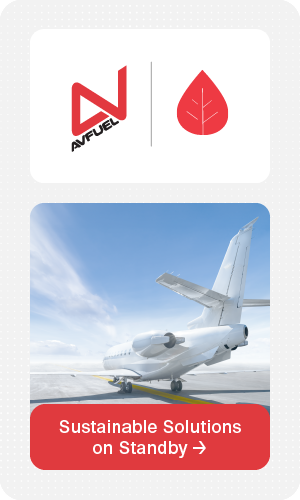Over the years, the National Air Transportation Association (NATA) and other aviation industry advocates have heralded in key modifications to the approach and design thresholds for hangars, most recently with the 2022 edition of National Fire Protection Association (NFPA) 409: Standard on Aircraft Hangars. NFPA 409 has been the design standard for hangars since the 1960s, and the new release addresses long-sought-after changes that better reflect the operating environment and current best fire protection practices for hangars. Since its issuance in October 2021, the aviation industry has started to grasp the revised standard’s integration into the modification of existing and development of new hangars.
Primary to the application and use of NFPA 409 is a better understanding of its role in the approval process by the AHJ (Authority Having Jurisdiction, typically the local Fire Authority) and the overlay of other industry drivers, such as the recent actions by numerous states to halt the sale, manufacture, and use of firefighting foam that contains per- and polyfluoroalkyl substances (PFAS), an environmentally hazardous component of many low-expansion aqueous film-forming foam (AFFF) systems. Recognition of PFAS hazards aligned with current studies on accidental hangar foam discharges aided the push for updated design standards, including the 2022 edition of NFPA 409. These standards provide AHJs, designers, and operators the opportunity to evaluate alternative solutions for fire protection, although they have also created confusion as new approaches are vetted and adopted in varying non-concurrent approval cycles.
Part of the challenge of the local AHJ’s adoption of the 2022 NFPA 409 edition is how it is referenced within the local building codes. Most of the United States has adopted the model codes by the International Code Council (ICC) known as the I-Codes, or more simply the IBC (International Building Code) and IFC (International Fire Code). The basis of approval for nearly all new and renovation hangar projects is the 2018 or 2021 I-Codes, which adopt by reference NFPA 409 for fire suppression requirements.
Herein lies the dilemma: current I-Codes adopt the previous 2016 NFPA 409 edition rather than the 2022 revisions. Fortunately, the new 2022 edition will be referenced in the upcoming 2024 I-Codes for full adoption, although these new codes will not be issued until late 2023 and typically are not formally adopted until at least a year after release.
Why It’s an Issue and How to Navigate the Changes
The most significant issue centers around Group II Hangars, specifically balancing hangar operations with the appropriate fire suppression system. Under NFPA 409, most general aviation hangars fall within the size limits of a Group II hangar: 12,000 SF to 40,000 SF with a maximum door height of 28’. Per the standard, all Group II hangars require some type of foam suppression system except for hangars that only store unfueled aircraft. The current IBC, which references the use of NFPA 409, notes, “Where a fixed based operator has separate repair facilities on site, Group II hangars operated by a fixed base operator used for storage of transient aircraft only shall have a fire suppression system but is exempt from foam requirements.” The current issue is that the 2022 edition does not reference the same exceptions, and the omission of a foam system is tied directly to a limitation of hazardous operations, such as welding, painting, and fuel system work—hazards that are not associated with whether the hangar is part of an FBO, houses transient aircraft or has other maintenance operations on site. The current misalignment stems from a lack of detailed hazards prior to the recent release of the 2022 edition, coupled with the ICC’s approach that only a storage hangar for transient aircraft with the direct ability to provide maintenance on-site would mitigate the hazard within the hangar to a point where a foam suppression system would not be required.
This background information is key to developing the appropriate strategy for renovating or designing a new hangar. Although many AHJs understand the context of the new 2022 edition and agree with its intent, they are beholden to the adoption of the previous 2016 version that lacks the updated hazard-based approach. Unfortunately, this may not be a short-term issue given the 2024 I-Codes will most likely not be in alignment with the 2022 edition’s hazard-based approach, although it does allow for additional maneuvering in the interim via direct use of the current codes or through an Alternative Materials, Design, and Methods Request (AMMR).
Whether you follow the path of an AMMR or decide to follow the intent of the current codes, early discussions between the AHJ and project stakeholders—including the operator, owner, and an architect or engineer who has a good understanding of these fundamentals and the ability to adapt to an appropriate solution—are essential to alignment of all parties will ensure a smooth design, permitting, and development process for either a new hangar project or existing hangar renovation.
Identifying Appropriate Solutions
New hangar developments provide the best opportunity for a sprinkler-based suppression system in lieu of a foam system, allowed per code for projects up to 40,000 SF with a 28’ maximum door height that meet the IBC standard exceptions (FBO, transient, on-site maintenance). For projects that cannot meet these requirements yet desire a PFAS-free solution, consider using a fluorine-free high-expansion foam system or supplementing a sprinkler system with fluorine-free hose stations. If foam, regardless of fluorine content, is not an acceptable solution, the current codes allow for the construction of a Group III hangar up to 30,000 SF with a 28’ high maximum door supplemented with the appropriate fire protection of the building framing and roof elements. Per the 2016 edition of 409 and the current I-Codes, a Group III hangar does not require a foam system unless it is pushed into a Group II category through hazardous operations or a collective aircraft in-place fuel capacity of more than 7,500 gallons.
Conversion of existing hangars to remove a foam system can follow much of the same approach as new hangars take to avoid these systems, but it requires mindful consideration of transient aircraft, FBO status, and on-site maintenance. If all of these cannot be addressed, the local AHJ may have a strong basis for denying the removal of the existing foam system. If the use of a foam system is not an option, consider the conversion of the hangar from a Group II to a Group III via building fire protection upgrades. If a Group III hangar is not possible, consider replacing existing low-expansion foam systems with a fluorine-free low-expansion system if acceptable by the AHJ.
Another alternate would be the integration of a fluorine-free high-expansion foam system. If none of these solutions are achievable, consider enhancing the existing foam system triggering components to prevent accidental foam discharge.
With any removal or modification of a foam system, it is paramount to fully understand the challenges. The complete removal of fluorine from existing piping and tanks via flushing typically leaves some residual component, and complete replacement of the system may be required with potentially larger pipe and tanks to accommodate the new demand requirements. For a standard 30,000 SF hangar these costs, including disposal of the foam, can range from $100,000 to more than $1,000,000 depending upon the hangar location. These factors must be balanced with the average cost of an accidental foam discharge, which can easily exceed $1,000,000.
Although navigating a successful hangar solution for either a new build or a renovation can appear challenging, the general direction of the industry and code bodies is positive, recognizing the hangar operational requirements of the general aviation community and balancing this with the appropriate design and life safety needs of the project. The path for full alignment on these goals may be a bit bumpy in the interim, but early discussion and approval of the design and code compliance intent by all project participants, including local code officials, is always the best solution.
 By Dan Bianco, AIA
By Dan Bianco, AIA
President
JRMA Architects & Engineers
Dan Bianco leads the firm’s Aviation Group and is President of JRMA, a mid-sized architectural and structural engineering firm based in Orange County, California with offices in Portland, Houston, and Lexington, Kentucky. With more than 100 aviation projects to his credit, Dan brings over 35 years of project experience to all scales and types of aviation projects including FBOs, hangars, MROs, GSE facilities, CBP facilities, aviation museums, and general aviation support buildings. As an architect and LEED-accredited professional, he has been instrumental in creating flexible and operationally efficient projects that incorporate economically sensible sustainable design principles including the world’s first LEED-Platinum general aviation hangar and the first hangar to be certified under the California Green Building Standards.






